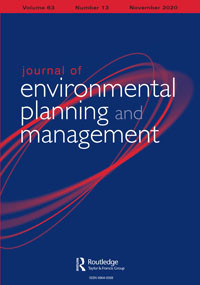Do city dwellers care about peri-urban land use? The case of environment-friendly agriculture around Milan

30.09.2020
Peri-urban agriculture, agri-environmental policy, choice experiment, random parameter logit model, random utility in WTP space
Journal of Environmental Planning and Management, 30 September 2020
Undeveloped land adjacent to urban areas has a strong potential to generate high amenity values to urban dwellers via the adoption of environment-friendly agricultural practices. Yet, there is a lack of specific policy measures tailored to unlock such potential and a scant knowledge of the preferences of the main beneficiaries. Analysis of data from a Choice Experiment in the municipality of Milan based on current policy deliverables shows that a large share of the urban population is willing to pay for specific ecological benefits linked to agricultural practices. Organic farming and land strips sown with wildflowers are the two practices whose ecological benefits are found most desirable. Willingness to pay for a policy intervention is shown to significantly correlate with income class, with low income recipients being more interested in organic farming while those with middle or high income deriving higher benefits from planting fast-growing trees.
Undeveloped land adjacent to urban areas has a strong potential to generate high amenity values to urban dwellers via the adoption of environment-friendly agricultural practices. Yet, there is a lack of specific policy measures tailored to unlock such potential and a scant knowledge of the preferences of the main beneficiaries. Analysis of data from a Choice Experiment in the municipality of Milan based on current policy deliverables shows that a large share of the urban population is willing to pay for specific ecological benefits linked to agricultural practices. Organic farming and land strips sown with wildflowers are the two practices whose ecological benefits are found most desirable. Willingness to pay for a policy intervention is shown to significantly correlate with income class, with low income recipients being more interested in organic farming while those with middle or high income deriving higher benefits from planting fast-growing trees.
